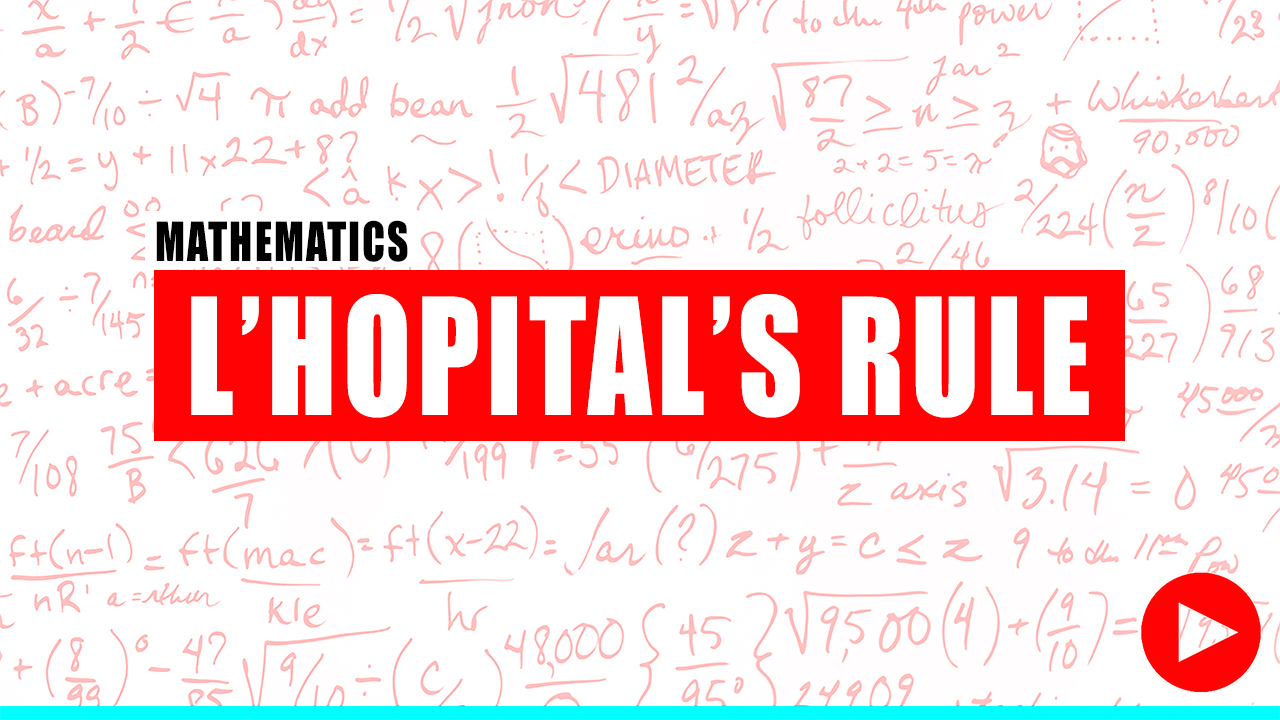In this episode of Engineer In Training Exam TV, Justin walks you through a Fundamentals of Engineering Exam Review of LHopital Rule.
We will begin by defining L’Hopital’s Rule and run through a couple of instances in which we can use this rule to determine the limit of a particular function.
This Fundamentals of Engineering Exam Review of LHopital Rule is part of the global subject Mathematics.
Having served over 1.5 million lessons in 150 different countries, it’s safe to say we have been in the trenches.
In the trenches working with those who are taking the exam for the first time, either fresh out of college or having taken a few years off from the books.
In the trenches working with those who have already attempted the exam, maybe multiple times, and can’t seem to crack the code.
In the trenches working with those who have been away from the books for ages, from standardized testing for the same amount of time, and can’t fathom taking on this beast of an exam.
And every iteration in between.
Every student’s situation is unique, but the building blocks of what success looks like are always the same.
Click below to register for the FREE myFE Exam Academy Course.
Once you are registered, you’ll get instant access to a proven roadmap, strategies and tactics…
Straight to your email box.
REGISTER NOW!
Hey what’s going on everyone, it’s Justin Dickmeyer from EngineerInTrainingExam.com.
In today’s video we are going to present a Fundamentals of Engineering Exam Review of LHopital Rule.
We’ll start off this tutorial discussing the theory and then get in to working a problem.
So let’s start off our Fundamentals of Engineering Exam Review of LHopital Rule by defining exactly what LHopital Rule.
let’s
consider the limit as X goes to a of f
of X over G of X if at a both f of X and
G of X are finite and G sub a is not
equal to zero then the typical process
of finding the limit would be plugging
in a wherever we see X in those
functions so our limit would simply be F
of a over G sub a but what happens if
both the numerator and the denominator
10 to 0 it is not clear then what the
limit would be in fact depending on what
functions f of X and G sub X are the
limit can really be anything so when we
get when we approach functions are asked
to find functions and we get an
indeterminate form of say 0/0 that’s not
really telling us much about a limit for
example let me show you a quick example
here let’s take the limit as X goes to 0
of X to the 4th divided by X to the
third so if we are asked to find this
limit we would first try to just plug in
0 for wherever we find X and in this
case doing that would give us the
indeterminate form of 0 over 0 so that’s
not telling us much about what the limit
of that function is so we need to use
l’hopital’s rule to do a couple steps to
help us determine what the real limit of
that function is so let’s take a look at
the first indeterminate form of 0/0 so
suppose that we have that same limit f
of X over G sub X as X goes to a
and when we take the limit in our
standard procedures we find that both f
of X and G of X are going to be 0/0 so
l’hopital’s rule what it does is it
gives us two two rules here number one
if we can take the derivative of both f
of X and G of X then the limit as X goes
to a of f prime of X divided by G prime
of X if that exists and is some number L
then the limit of our original function
f of X over G sub X is also L and number
two it tells us that if in on the other
hand F prime of X divided by G prime of
X if that tends to plus or minus
infinity then our original function also
tends to plus or minus infinity so let’s
take a quick look at an example here
let’s take the limit as X goes to 1 of 2
natural log of X divided by X minus 1 so
what we’d try to do here first is just
plug in 1 wherever we see X and we find
real quickly that we would get the
indeterminate form of 0 over 0 so what
we need to do is employ la PETA’s rule
and the first thing we need to do is
take the derivatives of both the
numerator and the denominator and once
that’s complete all we need to do is
plug that back into the limit and take
the limit so let’s take the limit as X
goes to 1 and take the derivatives of
both the numerator and the denominator
and we get 2 divided by X divided by X
oops sorry divided by 1 so plug in 1
wherever we see X and we find that the
that the limit is going to be 2 and la
PETA’s rule excuse me tells us that the
limit of
the original function is now – so what
if we have the indeterminate form or
another and rather another indeterminate
form we might encounter is infinity over
infinity so this isn’t telling us much
again about the limit so we have to
employ la PETA’s rule again and the same
rules apply if we can find a limit at F
prime of X G prime of X if we can find
this limit then that’s good that’s the
limit of the original function and in
the same way if we find that F prime of
X G prime of X tends to plus or minus
infinity then we know that our original
function also will tend to plus or minus
infinity so let’s take a look at an
example here let’s look at the example
limit as X goes to infinity of e sub X
divided by X so our our first shot here
will just plug in an infinity into
wherever we see X and we’ll see that we
have an indeterminate form of infinity
over infinity so once again not telling
us much about the limit of the function
so what we need to do is take the
derivatives of both the numerator and
the denominator and we will get limit as
X goes to infinity of e sub X over 1 so
now plugging in infinity we see that the
function will tend to plus infinity so
that tells us what our limit of the
original function does sometimes you
know we’ll encounter
equations in which we have to use
l’hopital’s rule of multiple times what
I mean by that is will will be given in
a function say our function is 1 minus
cosine of X divided by x squared and
we’ll be asked to take that limit
and let’s say it approaches zero so if
we plug in zero here we’ll find that
once again we’ll get the indeterminate
form zero over zero so now that we’ve
been through the process we know that we
need to take the derivative of both the
numerator and the denominator using
l’hopital’s rule to determine the limit
so what so let’s do that real quick
let’s take the limit as X goes to zero
of the derivatives and we’ll see that
that’s sine X divided by 2x so usually
right here well we can find a limit
usually it takes one step in using
l’hopital’s rule to find that limit but
in this instance we plug in zero and
once again we get 0/0 so what do you do
in this case it’s it’s not very
difficult all you need to do is employ
la PETA’s rule again take the derivative
of both functions and plug it back into
the limit X goes to 0 of cosine of X
divided by 2 and so now in this case we
plug in 0 and we find that the limit is
1/2 and that’s going to be the limit of
our original function so if you continue
to hit indeterminate forms as you work
your way through la PETA’s rule just
continue to employ until you find that
that definitive limit so that’s it for
now guys I appreciate you guys taking
the time out to check out this quick
tutorial head on over to engineer in
training exam comm for more resources as
you prepare for the engineering training
exam and if you have any questions just
contact me through the site or here on
YouTube
I appreciate have a good day guys but
you
—
Follow Prepineer Online Here:
Instagram: https://instagram.com/prepineer
Prepineer Facebook: https://facebook.com/prepineer
EngineerInTrainingExam Facebook: https://www.facebook.com/EngineerInTrainingExam
Snapchat: https://www.snapchat.com/add/prepineer
Website: https://www.Prepineer.com
Website: https://www.EngineerInTrainingExam.com
Twitter: https://twitter.com/prepineer
Passing the FE Exam – Engineering Advice (private Facebook group): https://www.facebook.com/groups/372061059925853/







Leave a Reply